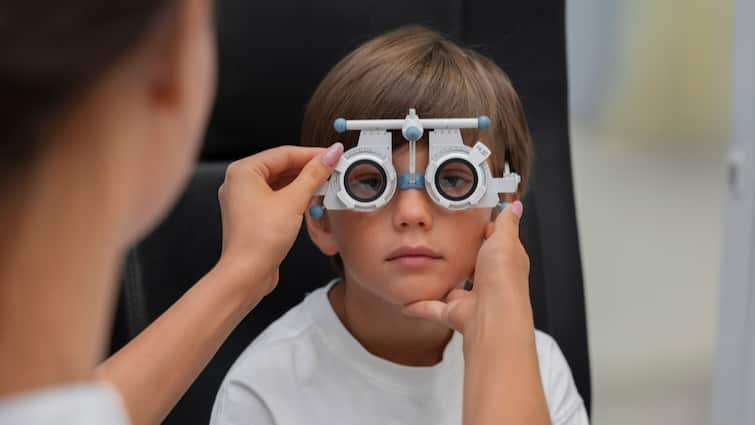(By Dr Ananya Ganguly)
According to different studies done globally, about 80 per cent of blindness is avoidable if diagnosed and treated early. Thus, paediatric eye care service plays a vital role in the elimination of avoidable blindness. Major eye health concerns can be discussed under the following age brackets. However, overlapping of the symptoms does often happen.
ALSO READ: Fatigue, Pale Skin, And Dizziness: Common Symptoms Of Anaemia You Shouldn’t Ignore
Eye Problems in Infants
In infants, who are aged up to 1 year, some of the eye troubles which can affect them severely are Congenital Nasolacrimal Duct Obstruction (CNLDO). It is a blocked nasolacrimal duct that can result in excessive tearing in babies even when they are not crying.
Then there is congenital glaucoma. When babies are oversensitive to even normal daylight, it could be due to increased eye pressure leading to a bull-eye look (buphthalmos). Another is the congenital cataract & nystagmus condition. The eyes of a child normally must be able to track objects after about 3 months of age. However, failure to do so, along with white reflex in eyes or continuous fluttering of eyes, may raise suspicion and could be due to congenital cataracts.
Apart from these, some babies may have some inherited retinal dystrophies which, when detected early, can be managed by certain advanced visual aids. The ROP, or retinopathy of premature birth, is another eye defect prevalent amongst children. It is a condition where abnormal blood vessels grow in the retina of premature babies or those who weigh less than 1.5 kg at birth.
Common Eye Problems in Preschoolers
For preschool kids who are aged between 2 years and 5 years, they mostly suffer from:
- Refractive Errors:This eye problem highlights hyperopia, myopia or astigmatism, which are typically detected during school visual examination programmes.
- Strabismus Defect: It is another condition where the parents may notice crossed eyes or eyes deviating inwards (esotropia) or outwards (exotropia).
- Amblyopia or Lazy Eyes: This is a very common eye issue involving a condition when there is a lack of vision in either eye, which can’t be fully corrected with glasses.
- Cortical Visual Impairment (CVI): This is a severe disorder which originates from the brain and affects the children and the adults. The parents should watch for any indication of delayed development, which may signal the presence of cerebral visual impairment.
Eye Conditions to Watch For in School Kids
For school kids who are aged between 6 years and 10 years, some of the common eye-related ailments are asthenopia, vernal keratoconjunctivitis and digital eye strain. In asthenopia, the kids complain of headache and discomfort, which may be due to undetected refractive error or convergence insufficiency. A headache workupshould be done properly, as serious conditions like optic disc oedema could be the reason.
Vernal keratoconjunctivitis is very common in this age group, leading to blurry vision, teary eyes, intense itching and discharge. Last but very well known is digital eye strain, which is an issue which is caused due to increased exposure to screen time lately in schoolchildren and, as a result, leads to reduced blink rate and thus dry eye disease.
Management And Care:
Paediatric eye problems can be addressed through various remedies depending on the specific condition, as in:
- Congenital Nasolacrimal Duct Obstruction (CNLDO) can be treated by probing of the lacrimal duct and sac massages.
- Refractive errors and amblyopia can be managed with corrective glasses and patching therapy.
- Cataracts and strabismus can be well managed with surgeries.
- Seasonal allergy or VKC and eye infections require steroid or antibiotic eye drops along with some antiallergic medications.
Early detection and appropriate treatment are crucial for optimal vision development.
Dr Ananya Ganguly is an ophthalmologist at Disha Eye Hospitals.
[Disclaimer: The information provided in the article, including treatment suggestions shared by doctors, is intended for general informational purposes only. It is not a substitute for professional medical advice, diagnosis, or treatment. Always seek the advice of your physician or other qualified healthcare provider with any questions you may have regarding a medical condition.]
Check out below Health Tools-
Calculate The Age Through Age Calculator



